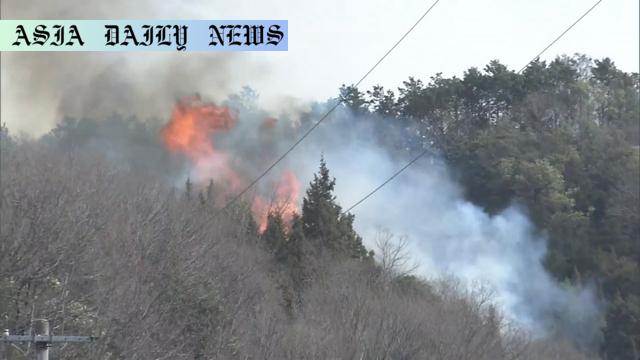Wildfires frequently occur in Japan between February and April, with over 30% caused by crop and grass burning. Safety measures advised.

Overview: Wildfires in Japan between February and April
Japan has long been prone to seasonal wildfires, particularly during the months of February and April, when dry weather and strong winds create ideal conditions. According to the Fire and Disaster Management Agency, more than half of the wildfires in 2023 occurred in this short window of time, with a total of 1,299 cases reported nationwide. Regardless of the causes of these blazes, the statistics reveal a concerning pattern that repeats annually. The impact of these fires goes beyond ecological damage, posing risks to both human lives and property.
Main Causes of Wildfires in Japan
Analyzing the data from 2023, it becomes evident that a significant proportion of wildfires—over 30% or 416 cases—are caused by people burning crops and grass in their fields. Field burning further contributed to 247 cases, while arson or suspected arson led to 98 cases. Discarded cigarettes accounted for 49 instances, while improperly extinguished matches and lighters caused an additional 32. This underscores the role of human activity in escalating the wildfire crisis, with negligence playing a critical role.
Safety Measures and Public Advice
The Fire and Disaster Management Agency has highlighted the importance of mitigating these human-driven causes. Key safety precautions include avoiding open fires near withered grass or in windy and dry weather conditions. Additionally, individuals are urged never to leave a fire unattended and to ensure it has been completely extinguished before leaving the site. Proper disposal of cigarettes, lighters, and matches is crucial to preventing accidental ignitions.
The Broader Implications of Wildfires
The seasonal spike in wildfires has broad implications for Japan’s natural environment, economy, and public health. Burned fields degrade soil quality, disrupting agricultural activities and leading to financial losses for farmers. Furthermore, the smoke from these fires can exacerbate respiratory issues, particularly among the elderly and children. Authorities need to enforce stricter regulations and engage in public awareness campaigns to reduce these incidents effectively.
Long-Term Strategies for Mitigating Wildfires
As the frequency of these fires persists, a need for long-term strategies becomes apparent. Solutions could include introducing more stringent penalties for individuals found responsible for negligence leading to fires. Enhancing community education about fire safety and encouraging sustainable agricultural practices may also help in reducing risk. Additionally, investing in better firefighting technology and infrastructure can ensure quicker responses to blazes, minimizing their spread and impact.
Commentary
The Repeated Challenge of Wildfires in Japan
The rising frequency and seasonal recurrence of wildfires in Japan present both environmental and social challenges that demand urgent attention. Every year, between February and April, the nation grapples with a surge in wildfires, driven in large part by human activity. It’s clear this isn’t a one-off problem but a pattern that calls for consistent and robust preventative measures.
The Human Role in Wildfire Incidents
What’s troubling about the data is how preventable these fires are. Over 30% of wildfires stem from people burning crops and grass, acts that are often carried out without proper caution. These numbers remind us how critical public education and awareness campaigns are in mitigating this issue. Encouraging responsible behavior when handling fire, especially during dry and windy weather, can make a significant difference.
Striking a Balance Between Tradition and Modern Fire Safety
Many rural communities in Japan have traditions of open-field burning as part of agricultural practices. While this cultural element is significant, it needs to be harmonized with modern fire safety protocols. A balance can be struck by creating designated burning zones where fires can be monitored and controlled. This approach respects local traditions while minimizing risks.
Looking Towards a Safer Future
Ultimately, addressing the wildfire problem in Japan requires a multi-faceted approach. Stricter regulations, community engagement, and technological advancements in monitoring and firefighting can collectively pave the way for a safer future. Public involvement is crucial—everyone needs to take responsibility for their actions to reduce the devastating impact of these fires. Only then can Japan hope to break free from this recurring cycle of destruction.


